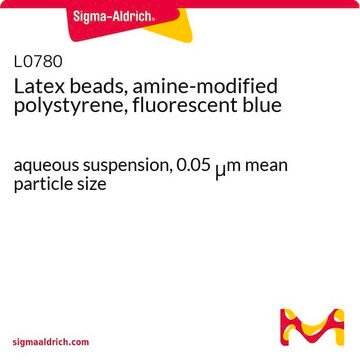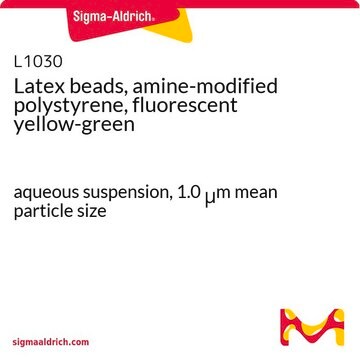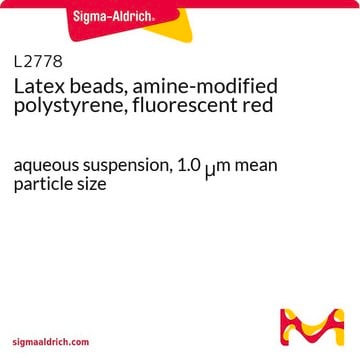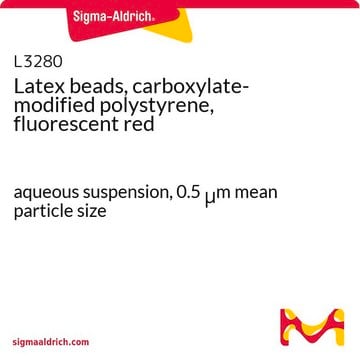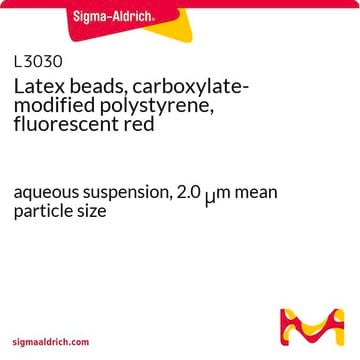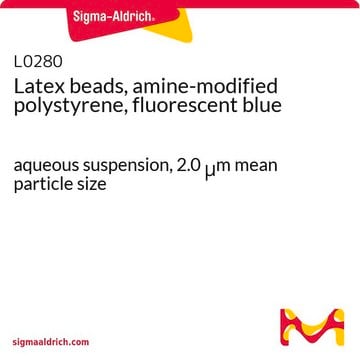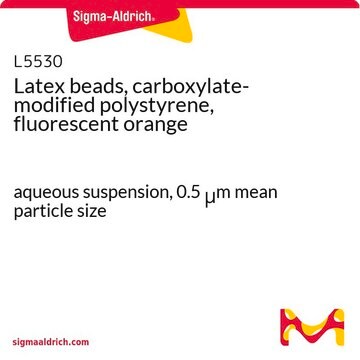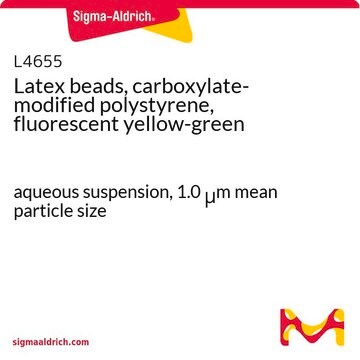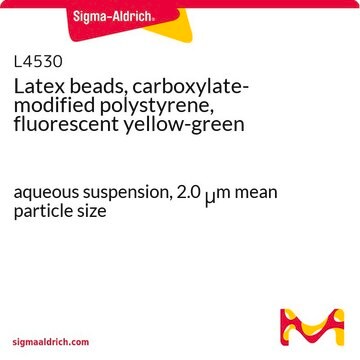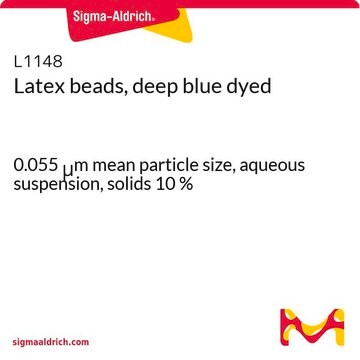Unfortunately, the molecular weight of this product is not determined.
L9904
Latex beads, amine-modified polystyrene, fluorescent orange
aqueous suspension, 0.1 μm mean particle size
Sinónimos:
Amine-Modified Latex Beads, Fluorescent Orange Beads
Seleccione un Tamaño
MXP 1,732.00
Seleccione un Tamaño
About This Item
MXP 1,732.00
Productos recomendados
Formulario
aqueous suspension
composición
Solids, 2.5%
técnicas
cell based assay: suitable
tamaño medio de partícula
0.1 μm
fluorescencia
λex ~475 nm; λem ~540 nm
aplicaciones
cell analysis
¿Está buscando productos similares? Visita Guía de comparación de productos
Aplicación
Código de clase de almacenamiento
10 - Combustible liquids
Clase de riesgo para el agua (WGK)
WGK 3
Punto de inflamabilidad (°F)
Not applicable
Punto de inflamabilidad (°C)
Not applicable
Elija entre una de las versiones más recientes:
¿Ya tiene este producto?
Encuentre la documentación para los productos que ha comprado recientemente en la Biblioteca de documentos.
Los clientes también vieron
-
is it possible to know the molecoar weight to calculate the molarity of the suspension?
1 answer-
Helpful?
-
-
How did you verify the amine coating? What spectroscopy method have you used to verify the amine coating? Can you show the result that proves that the amine has been coated? (For example, if you have done FTIR, then can you show us the peaks)
1 answer-
The amine modification of these beads is validated through an extensive series of titrations. Unfortunately, the method is considered proprietary. There is no specific documentation or data available to share.
Helpful?
-
-
what is the concentration of polystyrene microplastic [mg/ml] in this product No. L9904
1 answer-
The concentration of this aqueous suspension is 2.5% w/v or 2.5g/100 mL. This equates to 25mg per 1 mL package.
Helpful?
-
Active Filters
Nuestro equipo de científicos tiene experiencia en todas las áreas de investigación: Ciencias de la vida, Ciencia de los materiales, Síntesis química, Cromatografía, Analítica y muchas otras.
Póngase en contacto con el Servicio técnico